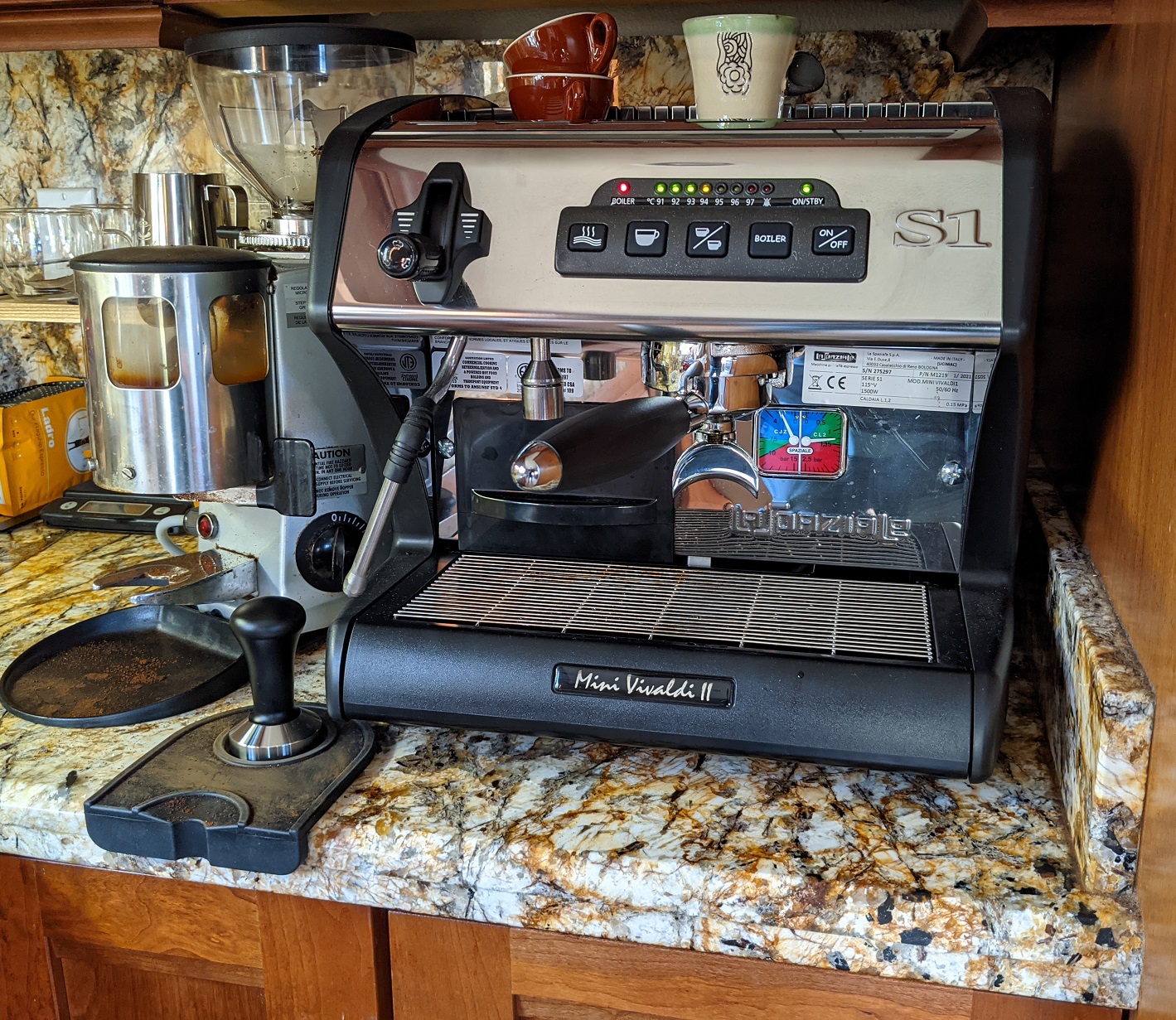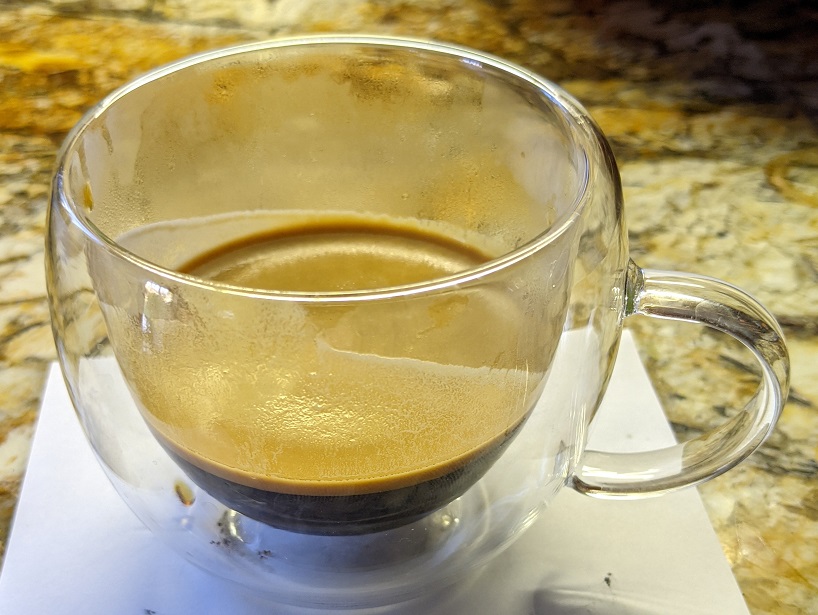Let’s kick this post off with a little coffee porn. Meet Guissepe!
We still name things in and around the home, animate and not. Our former machine, Geppetto, after fourteen years of dutiful service has moved on to a new home, that of a recent house-sitter who I came to learn loves espresso. She was once a barista herself. Guissepe is a dual-boiler machine with a pre-infusion chamber, ideal for lightly wetting the coffee “puck” before the push of pressurized steam. This improves the flavor profile of the shot. Can you tell I’m a purist ;-). He’s also programmable, allowing you to automate the precise temperature and volume of every shot (double or single). I rarely pull singles for myself or HW (she enjoys milk-based drinks) but it’s a nice-to-have for the occasional guest whose caffeine tolerance is lower than mine. The steam wand is a four-hole jobber, so creating silky micro foam for lattes and cappuccinos is a breeze, once you get the hang of it.
There are many factors at play in an exceptional shot of espresso. It starts with the beans, of course. (Pro tip: Did you know the coffee bean is the nut of the fruit of a coffee plant (or tree), which is classified as a cherry). The type of roast one prefers is subjective. There are many good beans to choose from. I tried this one recently, a medium roast, and it was very good. Regardless of the roast you prefer, the beans must be fresh. Opinions differ on what “fresh” means in this context. My opinion is roasted beans, properly kept (air-tight container in the dark) should be consumed within 4-5 weeks of the roast date. Much beyond that and something happens to the beans causing the flavor to decay. The cause of this (chemistry) interests me though I don’t yet understand it.
Next comes grind. This is hugely important. For espresso, you must purchase a quality burr grinder. Do not even think about trying to make quality espresso using a conventional coffee grinder, it simply cannot grind the coffee fine enough. Burr grinders are not cheap. Ours is a Mazzer mini (aka Massimo, photo: left of Guissepe) that we’ve had for over fifteen years now. It’s a continuously adjustable model allowing you to dial in the grind just right. Which is what? Well, like everything else, it depends – mostly on the roast color (light, medium, or dark), the freshness (believe it or not, fresh vs old beans can render very different coarseness on the same grinder setting), and even bean size. Once you account for all that your goal is ground coffee that has the consistency of finely granulated sugar. Compared to the coarsely ground coffee you’d use in a drip machine, a fine espresso grind maximizes the surface area of the coffee exposed to the infused water, which extracts the flavor into the shot.
Then there’s the volume of ground coffee in the basket. Experts recommend about 16-18 grams (for a double), adjustable depending on the size of the basket of course. Most “prosumer” machines, like Guissepe, have baskets large enough for that dose. Next comes the tamp. You need to invest in a good tamper, and like every gadget in making good espresso there are many to choose from. My advice: stick with the old-school style tamper, like this one. The rule-of-thumb is to tamp (compress) the evenly-distributed (!) grounds in the basket to about 30lbs of pressure. Although experiments I’ve seen concluded no difference in the final shot quality over the range of 5-30 lb. tamps. My advice: experiment til you get it right.
So, you’ve nailed the proper grind, decanted 16 grams into the basket, and tamped appropriately. That’s the puck. The next factors are water temperature and the bars of pressure needed to force hot water through the puck. I like 94 degrees centigrade for temperature at the brew head. As noted above, this value is programmable on Guissepe; the pressure on the other hand is a readout, displayed on the manometer (see photo). As the shot is being pulled the dial shows the pressure at the brew head. Again, depending on the volume of coffee, the grind, and the tamp, this should be around 7.5-9 bars of pressure. Below that minimum and the grind likely is too coarse; above, too fine.
Some machines don’t have a programmable volume feature. On those, another factor in drawing an a exceptional shot is how long to let the steamed water infuse the grounds. Opinions vary, but the rule-of-thumb for beginners is about 25-30 seconds (including pre-infusion if you have it). Guisspe has this feature but I still pay attention to the shot time. For a double, if it’s well outside this range I change my upstream parameters (finer/coarser grind, coffee volume, tamp strength, etc.).
And that’s it – time to enjoy! If you’ve dialed in all the parameters that go into an exceptional shot of espresso it should look something like this
Aficionados will note the quality of the crema there, that exquisite caramel cap on a perfect shot. If it’s too thin (or “blonde”) the coffee was likely over-extracted, and probably bitter; too thick and oily, under extracted, possibly sour.
At my workstation, during an average day, for myself and HW I will pull a total of four, sometimes five, double shots. At day’s end I clean up my mess, wash dishes, refill the reservoir (2.4L) and shut him down. I do that on my phone now since I connected Guissepe to a smart switch, which also lets me turn him on in the morning to heat up, without getting out of bed. First-world living!


